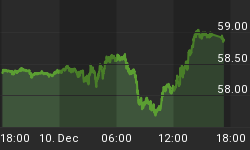The Dow had gained over 271 points by 11:48 AM EST following the release of the February wage report, showing a gain of over 300,000 new jobs, but a cool-down in the wage growth that had been dampening markets.

(Click to enlarge)
Jobs, or payroll employment, increased by 313,000 in February, according to the Bureau of Labor Statistics, but wages rose only 2.6 percent from the previous year. Additional good news for the market came in the form of a downward revision of the January pay gain to 2.8 percent.
The civilian labor force rose by 806,000 in February, the Bureau said, with the labor force participation rate increasing by 0.3 percent over the month to 63 percent. But the yearly figure remains relatively unchanged.
Total employment rose by 785,000 in February, while unemployment remained unchanged at 4.1 percent. Related: The Tweet That Started A Trade War
In February, the Bureau said average hourly earnings for all employees on private nonfarm payrolls had risen by 4 cents to $26.75. This figure went down well with markets, which have been fearful of further wage rises and a 7-cent wage gain in January.
“Over the year, average hourly earnings have increased by 68 cents, or 2.6 percent. Average hourly earnings of private-sector production and nonsupervisory employees increased by 6 cents to $22.40 in February,” the Bureau reported.

(Click to enlarge)
Overall, it represents a major hiring spree—the biggest since 2016.
For the market, it signals strong economic growth, but without the specter of wages getting out of control.
The bigger picture is that stocks are rebounding now because investors see less urgency for the Fed to take a more aggressive stance on interest rate hikes.
The market has been on edge over interest rates and inflation.
In February, new Fed chairman Jerome Powell helped cause a market sell-off by seeming to suggest that there could be more than the three planned interest rate hikes this year.
"At the December meeting, the median [FOMC] participant called for three rate increases in 2018. Now since then -- and we will submit another projection, all of us, in three weeks -- but what we've seen is incoming data that suggests a strengthening in the economy," Powell said in his 27 February testimony.
Speaking to Bloomberg, Princeton University professor Alan Krueger described the February wage report as one that is “going to strengthen the argument of some of the doves on the Fed, that people came back to the labor force last month – that’s a positive sign for the U.S. economy.”
By Jan Bauer for Safehaven.com
More Top Reads From Safehaven.com:

















